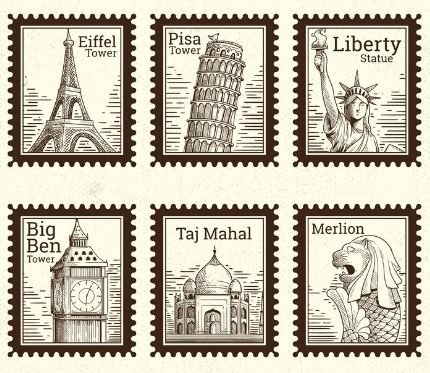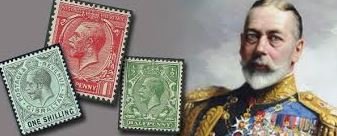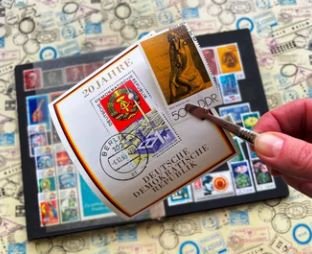The history of stamp collecting is a captivating journey that traces the evolution of this beloved hobby from its origins in the mid-19th century to the present day. As we explore the history of stamp collecting, we uncover how a simple adhesive postage stamp sparked a global passion, uniting enthusiasts across continents.
The history of stamp collecting reveals not only the artistic and historical significance of stamps but also the community and camaraderie it fosters among collectors. Through this exploration, we gain a deeper appreciation for the rich tapestry woven by the history of stamp collecting and its enduring appeal in our modern world.
Discover the fascinating the history of stamp collecting, from its origins with the Penny Black to its global popularity today. Explore how this beloved hobby has evolved and continues to unite enthusiasts around the world.
The History of Stamp Collecting
Stamp collecting, often referred to as philately, has a rich and fascinating history that dates back to the mid-19th century. The practice of collecting stamps began shortly after the introduction of the first adhesive postage stamp, the Penny Black, in 1840. This pivotal moment marked the beginning of a worldwide hobby that would capture the hearts and minds of millions.
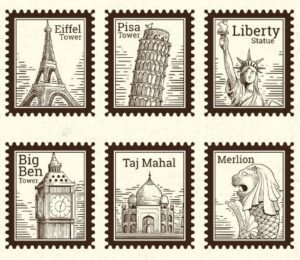
The Birth of Stamp Collecting
The history of stamp collecting can be traced back to the creation of the Penny Black in the United Kingdom. Designed by Sir Rowland Hill, this revolutionary stamp simplified postal services and made it easier for the public to send letters. Shortly after its introduction, enthusiasts began to realize the beauty and significance of these small pieces of paper, leading to the birth of stamp collecting as a hobby.
Early Enthusiasts and the Growth of the Hobby
In the years following the Penny Black’s release, stamp collecting grew rapidly. Early collectors, often referred to as philatelists, sought to acquire as many different stamps as possible. They would trade, buy, and sometimes even forge friendships through their shared interest. The first specialized stamp catalog, created by the French philatelist Georges Herpin, was published in 1862, further fueling the enthusiasm for stamp collecting.
The Global Expansion of Stamp Collecting
By the late 19th century, stamp collecting had spread beyond the UK, becoming a global phenomenon. Countries around the world began to issue their stamps, each reflecting national identity, culture, and history. This diversification provided collectors with a vast array of stamps to choose from, further enhancing the allure of the hobby. Stamp clubs and exhibitions began to emerge, fostering community and collaboration among collectors. If you want to read more about stamp collecting, visit here.
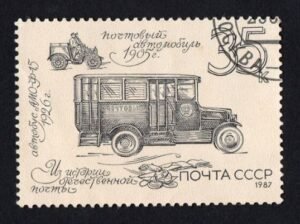
The Golden Age of Stamp Collecting
The early to mid-20th century is often referred to as the “Golden Age of Stamp Collecting.” During this period, the hobby reached unprecedented popularity, particularly in the United States and Europe. Collectors began to focus not just on acquiring stamps but also on understanding their historical context and rarity. This era saw the introduction of many specialized catalogs and the establishment of professional organizations dedicated to the hobby.
The Impact of Technology
The latter half of the 20th century brought about significant changes in the world of stamp collecting. Advances in printing technology and the advent of digital communication transformed how collectors interacted and shared their collections. Online platforms made it easier to buy, sell, and trade stamps across the globe, further expanding the reach of the hobby. Additionally, the internet allowed collectors to connect through forums and social media, fostering a sense of community among enthusiasts.
Modern Stamp Collecting
Today, the history of stamp collecting continues to evolve. While traditional collectors still value physical stamps, many new collectors are drawn to digital stamps and the concept of virtual philately. The rise of cryptocurrency and blockchain technology has also introduced innovative ways to collect and trade stamps. Modern collectors often focus on themes, such as space exploration or famous historical figures, reflecting contemporary interests and values.

Conclusion
The history of stamp collecting is a testament to human creativity and curiosity. From its humble beginnings with the Penny Black to its modern iterations in the digital age, stamp collecting remains a cherished hobby for millions worldwide. Whether for investment, nostalgia, or a love of history, the allure of stamp collecting endures, inviting new generations to explore the fascinating stories encapsulated in these tiny pieces of paper. As we look to the future, the history of stamp collecting will undoubtedly continue to unfold, reflecting the ever-changing tapestry of human culture and connection.

